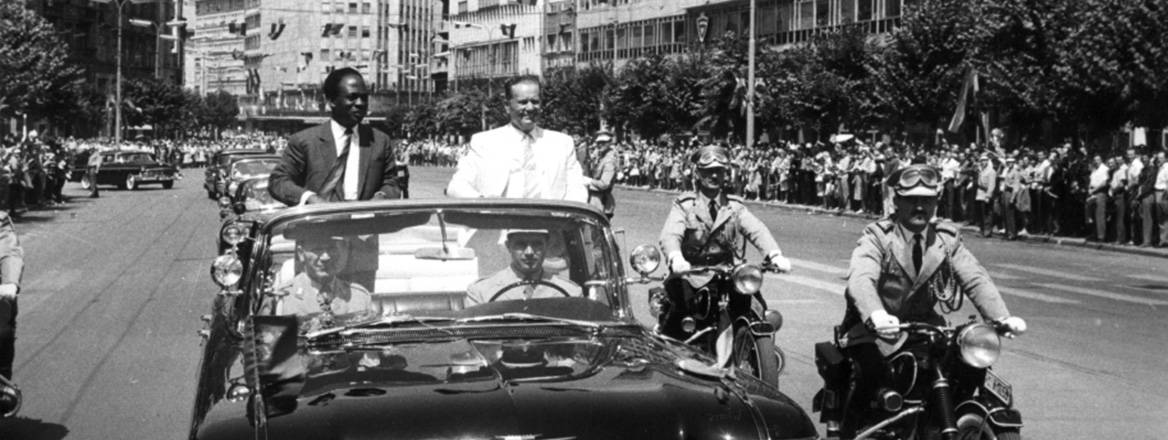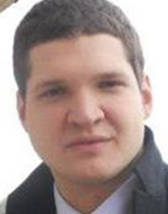Aligning with the Non-Aligned: Serbia Follows in the Footsteps of Old Yugoslavia
As Serbia faces numerous challenges in its foreign policy, it is re-engaging with old Cold War partners in the Non-Aligned Movement.
The story will be familiar to students of the Cold War. In a world divided geopolitically and ideologically between the US and the USSR, communist Yugoslavia, led by Josip Broz Tito, decided to go its own way by following a policy of non-alignment as one of the leaders of the Non-Aligned Movement. As the country collapsed, the membership of the rump Yugoslavia (Serbia and Montenegro) in the Movement was suspended in 1992. Since 2001, Serbia, the largest post-Yugoslav country, has been an observer. However, judging from its recent engagement with members of the Movement, one might be led to believe that it is still a member.
Recently, Serbian Foreign Minister Nikola Selaković visited Lebanon, Zimbabwe, Zambia, Kenya, Angola, Namibia, Egypt and Jordan. During Selaković’s tour, Serbia either donated COVID-19 vaccines or signed an agreement pledging a donation to most of these countries. In a phone conversation with his Vietnamese counterpart Bui Thanh Son, Selaković pledged to donate vaccines and medical equipment to Vietnam. Serbia is considering re-opening its embassy in Vietnam, and more countries may follow. On 11 and 12 October, Belgrade hosted the 60th anniversary of the first Conference of the Non-Aligned Movement held in Belgrade in 1961. Prior to this, during his tour, Selaković invited Movement members to attend the anniversary. But why would Serbia in a post-Cold War world be engaged in a policy that could be called ‘neo-non-alignment’?
Serbian Foreign Policy Drivers
The first reason is what remains the dominant issue in Serbian foreign policy: the Kosovo dispute. The Non-Aligned Movement countries that Selaković visited, except Egypt and Jordan, have not recognised Kosovo. Serbia is eager to ensure that remains the case. Last year, as part of a deal on economic normalisation between Serbia and Kosovo brokered by Donald Trump, Serbia agreed to temporarily suspend its campaign to persuade other countries to rescind their recognition of Kosovo. Kosovo agreed to do the same regarding its efforts to join international institutions. In early September, that moratorium expires, and Belgrade wants to be ready for this. Serbia will probably also try to convince countries like Egypt to rescind their recognition of Kosovo. The question remains whether Abdel Fattah el-Sisi’s regime in Cairo would risk irritating the administration of Joe Biden over a minor matter like Kosovo, especially as it is uncertain how tough Biden will be on Sisi on the human rights front.
Serbia is also taking the opportunity to seek out new markets because, like many other countries, it needs cash in the wake of the coronavirus pandemic. Yugoslav state-owned companies that used to operate in the developing world no longer exist. So, what economic benefits does Serbia expect? The best guess is that it is looking for new markets for the Serbian defence industry. While it has recuperated some of the damage caused by the collapse of Yugoslavia, Serbia remains a small player in the global defence market. Consequently, its best hope of winning export markets is among those countries that had good relations with the former Yugoslavia, notably the Non-Aligned Movement countries. Conveniently enough, Partner 2021, a defence exposition under the auspices of the Serbian Defence Ministry, corresponded with the anniversary of the Non-Aligned Movement in Belgrade.
Engaging with the Non-Aligned Movement is a way for the Serbian government to send a message to the West that it is not isolated
Serbia is also motivated by the logic of foreign policy balancing. As Serbia likes to balance Western and non-Western powers and play them off against each other, it is useful to draw historical analogies with the non-aligned Yugoslavia. The country is gone, and so is the Cold War, but the optics matter. Moreover, Serbia’s relations with the West are uneasy at this moment in time. Its ties with both the EU and the US are strained over differences on Kosovo. EU-led talks on normalisation between Serbia and Kosovo are not yielding results, and the US has openly expressed its desire for Serbia to recognise Kosovo. Meanwhile, the decline in the rule of law in Serbia is being noticed, and Belgrade’s ties with Moscow and Beijing are also becoming an issue. Engaging with the Non-Aligned Movement is one way for the Serbian government to send a message to the West that it is not isolated.
In that regard, during the Movement anniversary, Serbian President Aleksandar Vučić stated: ‘We are proud that as a neutral country, on the way to the EU, we are working with our traditional friends from Asia, Africa, the Pacific, Latin America. For these friends Belgrade, Serbia, the former Yugoslavia, have importance and essence. Our friendships in the North, South, East and West are our strength’. The fact that Russia, represented by the Russian Foreign Minister Sergey Lavrov, attended the meeting for the first time in the capacity of observer helped the Belgrade government. Russia had the opportunity to promote itself at a large, non-Western multilateral gathering, while Serbia could make a display of its diverse global partnerships. On top of that, Azerbaijan’s President Ilham Aliyev, as the meeting’s chair via video link, blasted rich countries for accumulating COVID-19 vaccines, and for pursuing ‘vaccine nationalism’. Given that the meeting had been preceded by Serbia�’s vaccine diplomacy, the Serbian leadership must have felt vindicated by this message.
Playing to the Home Crowd
Ultimately, domestic politics plays a role too. For many in Serbia, the time of Tito’s Yugoslavia was the period of history when the country’s prosperity and international prestige were at their highest point. Invoking the Yugoslavian legacy provides a good opportunity for the Serbian elite to stage photo-ops and promote themselves to their constituents as internationally respected politicians who are restoring the country’s position in the world. Indeed, before the anniversary in Belgrade, Selaković, together with Minister of Culture and Information Maja Gojković, opened the exhibition ‘Non-Aligned World’ in the Museum of African Art in Belgrade.
It remains to be seen what dividends Belgrade’s engagement with the Non-Aligned Movement will actually bring. The Movement no longer has the same weight as during the Cold War, and Serbia does not have the strategic significance of former Yugoslavia. However, re-enacting the history of non-alignment is still a convenient way for Serbian politicians to appeal to their voters.
The views expressed in this Commentary are the author’s, and do not represent those of RUSI or any other institution.
Have an idea for a Commentary you’d like to write for us? Send a short pitch to commentaries@rusi.org and we’ll get back to you if it fits into our research interests. Full guidelines for contributors can be found here.


